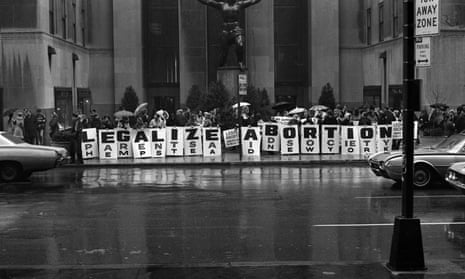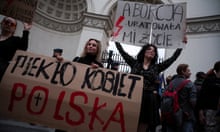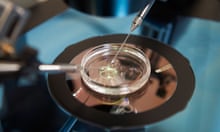When the doctor told me I was pregnant, he said most women were “extremely happy” with this news. I said: “Well, I’m not, and I would like to end this pregnancy.” He told me I would have to go before a committee at the hospital to determine whether a termination was necessary to save my life, including a psychiatrist’s report, and that it would take several weeks. And what would be the chance they would agree? “I can’t help you,” he said.
It was 1968 and I was 22, living in New Haven, Connecticut, and in my first month at Yale Law School. I knew straight away that I was not going to carry a pregnancy to term, that I was very early on in the pregnancy and that it should not be a major procedure.
Somehow, I got the name and number of one of the most well-known doctors in the area who performed abortions illegally, Nathan Rappaport. A man with a deep gravelly voice told me that it would be $500 upfront, and scheduled the procedure for a Saturday morning, so I didn’t miss any law school classes. A friend lent me the money and I went with another friend, Steve, to Rappaport’s apartment in a brownstone on New York’s Upper West Side.
Growing up knowing abortion was illegal meant terrible fear about pregnancy. In high school, one of our most popular classmates was immediately deleted from the class when she got pregnant by one of the school’s leading athletes (of course, it didn’t affect him at all). She missed most of her senior year, and then the child was taken away and given up for adoption.
I tried to be careful not to get pregnant. When I found out I was, it was just this sinking feeling: what am I going to do? I couldn’t believe it was happening. My whole life, my whole future was in jeopardy at that moment. I thought that the doctor would understand that, but he didn’t, or he pretended that he didn’t. It was just an awful, nauseating feeling.
It looked like a home: you first walked into a living area, where Steve had to stay, then I was taken into a room that looked like a dentist’s office, which had a chair with stirrups. I was nervous – you do not go for medical procedures at an apartment – but it was just a matter of immediacy. Get it done, and then I’ll breathe again. I was frightened about the procedure, but I knew I was doing the right thing. Fortunately, I hadn’t known beforehand that he had been imprisoned for manslaughter, after a woman whom he had given abortion to had died.
When I came round from the anaesthesia – I think he had given me ether – still groggy and trying to deal with everything, he foisted legal papers on me about his case. He knew I was a law student and wanted me to help him overturn his conviction and get his medical licence back.
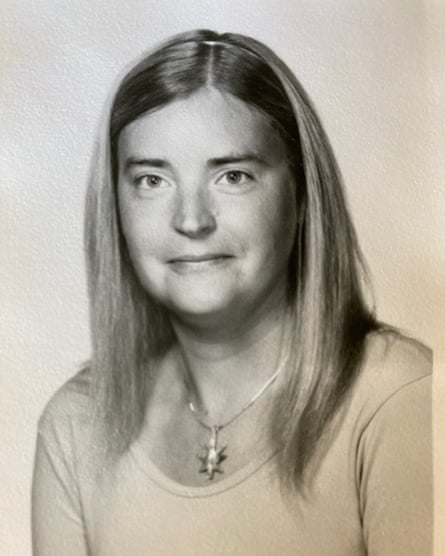
I took the documents and left. I felt relief, but I was also in a lot of pain. Back in my dorm room at Yale, I was bleeding. I was worried about what would happen – was I going to bleed to death? I hadn’t given much thought to the safety of it before because I knew I was going to do it. It may have been denial on my part. But that weekend, dealing with the pain and bleeding, I worried I had been permanently mutilated or would die.
On Monday, I went back to the original doctor I had seen, and told him I’d had an abortion. He told me that he could admit me to the hospital to be “cleaned out” – that it wasn’t illegal. Fortunately, the pain and bleeding stopped after a few days; I think he gave me antibiotics, concerned about infection.
After I spent that weekend worried that I might die, I became very angry, realising that this was happening to me because I was a woman, so didn’t have rights in this society. I focused immediately on doing something about it, turning pain and anger into action. I signed up with the Connecticut branch of the American Civil Liberties Union to write a brief on the unconstitutionality of abortion laws, and did a survey of obstetrician-gynecologists in Connecticut about their opinions on abortions. We found that, even in the most Catholic state in the country, the majority favoured reform of the abortion law, if not a repeal of it.
My experience led me to get involved with women’s liberations groups, and we started talking about our abortions. Other than with my roommate, and the friend who had accompanied me to Rappaport, I hadn’t talked about it. I believed that it was not something that I should be sharing because I was in law school, and I had done something illegal, and could be kicked out. Also, I didn’t know at that point what anyone’s reaction would be, because nobody ever talked about it. Everybody knew somebody who knew somebody, who could find the number of someone who could do an abortion, but no one talked about it otherwise. You never talked about how awful it was that you would be forced to produce a baby.
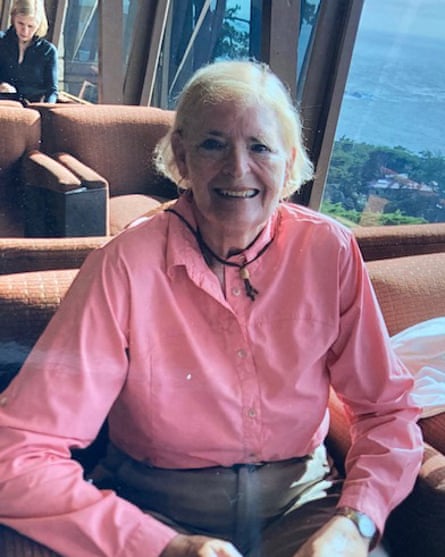
We formed a group, Women vs Connecticut. We enlisted thousands of women, including health professionals, to sue Connecticut in federal court and get our rights to do what we wanted with our bodies. We were successful in the case, Abele v Markle, that preceded Roe v Wade.
In 1974, not long after Roe, I had a now legal abortion and the difference was night and day. It was performed by Dr Virginia Stuermer, one of my heroes and a pioneer in women’s health. By then, I was married, and I was starting to set up the Connecticut Women’s Education and Legal Fund, the first public interest law firm for women’s rights in Connecticut, which demanded commitment from me 24/7.
This time, I had a friend holding my hand and it was in a sterile setting. It didn’t require hospitalisation; it was a short procedure, and not one that caused any great pain or bleeding afterwards. It was incredible that, in those short years between the two abortions, it could be so different. Now, with medication, women can be full members of society, knowing that if we get pregnant we have humane, inexpensive and safe ways of terminating a pregnancy.
I am obviously very upset by the Roe v Wade decision. What has always bothered me is that it is going to disproportionately affect poor women – those who can’t travel, or buy the pills that will become illegal. It’s why we brought the lawsuit Maher v Roe, against the Connecticut department of social services. Once we stymied them from preventing women from getting abortions, they made it virtually impossible for poor women to get abortions in Connecticut by cutting abortion payments out of Medicaid. So we sued them for that.
At that point, I was a legal services attorney and I represented one poor woman after another. We made it to the supreme court, but were told that a state could decide what it is going to do with its welfare resources. Then the Hyde amendment came in, prohibiting the use of federal funds for abortion, so it’s never been easy for poor women in this country to assert their rights fully. It’s brutal.
I am so happy when I read about women in Colombia, and other countries fighting hard to get restrictions on abortion eliminated, and winning. I console myself with the notion that this is the last gasp of the white male trying to exercise control over women of all colours, races and classes. Why do they not understand that women are not vessels? Women are human beings.
